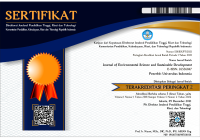Abstract
From the perspective of anthropology, this article aims to explore why movements seeking environmental preservation and religious and cultural revitalization have been launched on the island of Sumba, and how the results of this research have contributed to promoting the UN Sustainable Development Goals (SDGs), especially “Goal 6: Clean Water and Sanitation” and “Goal 15: Life on Land.” Sumba is one of the most sparsely populated and impoverished regions in Indonesia. Since the 2000, the process of marginalization of the Sumbanese has been drastic. They have suffered from the pressures of expanding agro-industry and mining. Most land on the beachside has been purchased and fenced off for future tourism development. Protesting the hardships, the people face, local NGOs collaborating with Sumbanese ritual specialists launched Festival Wai Humba (Festival of Sumbanese Water) in 2012. It aims not only to promote environmental protection but also to preserve the cultural heritage of Sumba, in terms of which the executive committee emphasizes the Sumbanese indigenous and local knowledge (ILK). The analysis of the Indonesian text, the prospectus of the fifth FWH, is important to understand the whole festival. Other data I discuss here were collected mainly by the qualitative research method. I interviewed the festival committee members and other attendants and conducted participant observation in various activities during the festival. The research shows the importance of a network connecting local communities all over Sumba and the translation of ILK into more adaptable and understandable knowledge. These two points are made possible by the collaboration between community leaders and NGOs, which is needed to negotiate with local and central governments and private companies.
Recommended Citation
Koike, Makoto
(2019).
INDIGENOUS AND LOCAL KNOWLEDGE PROMOTING SDGs IN INDONESIA: THE CASE OF THE SUMBANESE CULTURAL FESTIVAL.
Journal of Environmental Science and Sustainable Development, 2(2), 218-227.
Available at: https://doi.org/10.7454/jessd.v2i2.1034






